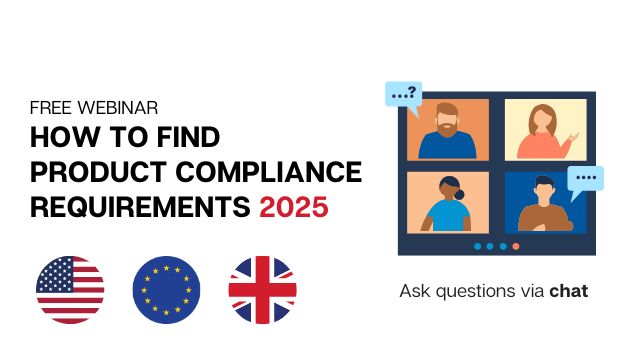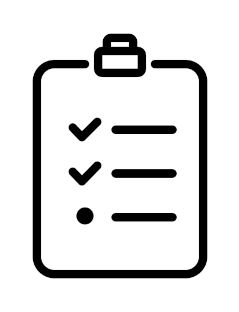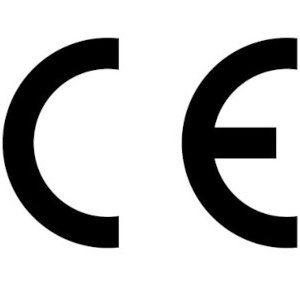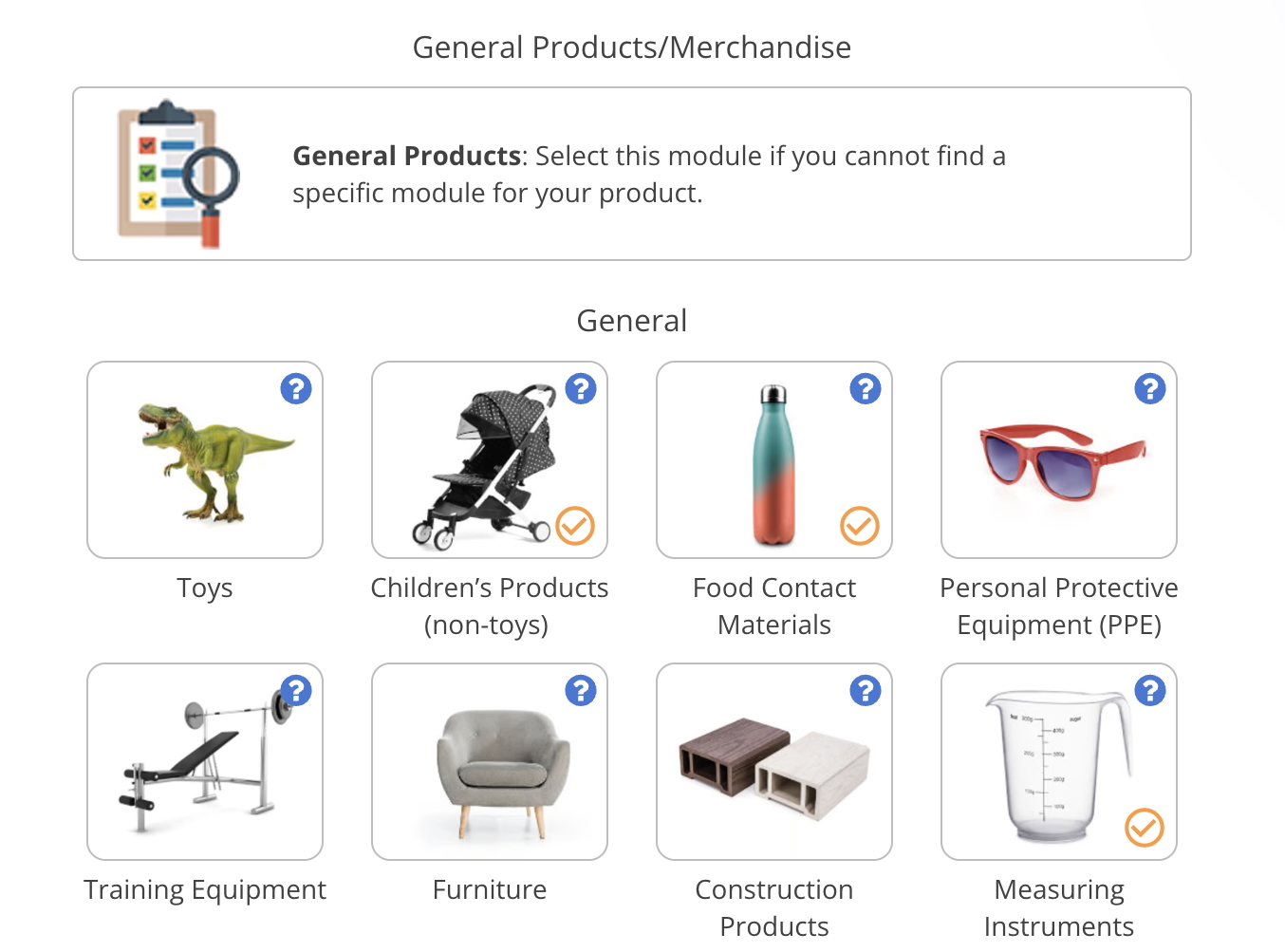Certain food contact materials must be accompanied by a Declaration of Compliance when sold or distributed in the European Union. This responsibility to issue a Declaration of Compliance generally falls on the manufacturer or other companies that introduce the product on the EU market
For context, food contact materials can refer to food packaging materials, drinking bottles, cutlery, and other products and materials in contact with food and beverages.
In this guide, we answer common questions about FCM Declaration of Compliance requirements in the EU.
Covered regulations
- Plastic Materials Regulation (EU) 10/2011
- Recycled Plastic FCM Regulation (EU) 2022/1616
- Use of Bisphenol A in FCM Regulation (EU) 2024/3190
- Restriction of Use of Certain Epoxy Derivatives in FCM Regulation (EC) 1895/2005
- Ceramic FCM Directive 84/500/EEC
- Active and Intelligent FCM Regulation (EC) 450/2009
- Regenerated Cellulose Film FCM Directive 2007/42/EC
- Polyamide and Melamine Plastic Kitchenware from China or Hong Kong SAR (China) Regulation (EU) 284/2011
Content Overview

FREE CONSULTATION CALL (30 MIN)
 Ask questions about compliance requirements
Ask questions about compliance requirements Countries/markets:
Countries/markets:
 Learn how we can help your business
Learn how we can help your business
You will speak with:Ivan Malloci or John Vinod Khiatani
What is a Declaration of Compliance (DoC)?
The Declaration of Compliance is a self-issued document stating certain information about a food contact material or food contact products. This information can be included:
- Importer/Manufacturer
- Product name
- List of materials/components
- Statement declaring that the product is compliant with certain regulations
- Information about the substances
- Types of food the material is made for contact with
- Time and temperature
- Information about the test methods
Note that the specific information that must be present in a Declaration of Compliance is determined by the EU FCM regulations that apply to the product.

Which products require a Declaration of Compliance (DoC)?
A Declaration of Compliance is required for products that fall within the scope of certain food contact materials regulations.
Plastic food contact materials
Plastic food contact materials are generally covered by the Plastic FCM Regulation (EU) 10/2011. This regulation mandates the creation of an FCM DoC.
- Plastic lunch boxes
- Drinking bottles with plastic parts
- Plastic cutlery
- Plastic plates
- Plastic food packaging
Note that the regulation can also apply to coatings.
Other food contact materials
Other EU regulations, applicable to the following products, also require a Declaration of Compliance. You can find a list below.
Which EU regulations and directives require a Declaration of Compliance (DoC)?
Various EU regulations and directives require a Declaration of Compliance or similar document.
Plastic FCM Regulation (EU) 10/2011
The Plastic FCM Regulation (EU) 10/2011 requires that all food contact materials within its scope come with a Declaration of Compliance.
Other FCM regulations
The following FCM regulations and directives also require an FCM DoC:
- Recycled Plastic FCM Regulation (EU) 2022/1616
- Use of Bisphenol A in FCM Regulation (EU) 2024/3190
- Restriction of Use of Certain Epoxy Derivatives in FCM Regulation (EC) 1895/2005
- Ceramic FCM Directive 84/500/EEC
- Active and Intelligent FCM Regulation (EC) 450/2009
- Regenerated Cellulose Film FCM Directive 2007/42/EC
- Polyamide and Melamine Plastic Kitchenware from China or Hong Kong SAR (China) Regulation (EU) 284/2011
Who is responsible for creating an FCM Declaration of Compliance (DoC)?
The various FCM regulations don’t always clearly specify which company is responsible for issuing a Declaration of Compliance. In practice, this responsibility often falls on:
1. EU companies importing food contact materials from third countries (outside the EU)
2. EU companies manufacturing food contact materials for EU buyers
FCM Declaration of Compliance (DoC) Examples
In this section, you can find a list of required Declaration of Compliance (DoC) in several EU regulations and directives concerning food contact materials. Note that these are from the latest consolidated versions available at the time of writing.
Plastic FCM Regulation (EU) 10/2011
(1) the identity and address of the business operator issuing the declaration of compliance;
(2) the identity and address of the business operator which manufactures or imports the plastic materials or articles or products from intermediate stages of their manufacturing or the substances intended for the manufacturing of those materials and articles;
(3) the identity of the materials, the articles, products from intermediate stages of manufacture or the substances intended for the manufacturing of those materials and articles;
(4) the date of the declaration;
(5) confirmation that the plastic materials or articles, products from intermediate stages of manufacture or the substances meet the relevant requirements laid down in this Regulation and in Article 3, 11(5), 15 and 17 of Regulation (EC) No 1935/2004;
(6) adequate information allowing the downstream business operators to ensure compliance with this Regulation relative to the substances used for which restrictions and/or specifications are set out in Annexes I and II, including adequate information on the presence of non-intentionally added substances if present in an amount that could cause non-compliance of a final material with Article 3 of Regulation (EC) No 1935/2004.
At intermediate stages, this information shall include the identification and amount of the following substances contained in the intermediate material:
— substances that are subject to restrictions and/or specifications in Annex II, or
— substances for which genotoxicity has not been ruled out, and which originate from an intentional use during a manufacturing stage of that intermediate material and which could be present in an amount that foreseeably gives rise to an individual migration into food from the final plastic material or article exceeding 0,00015 mg/kg food;
(7) adequate information relative to the substances which are subject to a restriction in food, obtained by experimental data or theoretical calculation about the level of their specific migration and, where appropriate, purity criteria in accordance with Directives 2008/60/EC, 95/45/EC and 2008/84/EC to enable the user of these materials or articles to comply with the relevant EU provisions or, in their absence, with national provisions applicable to food;
(8) specifications on the use of the material or article, such as:
(i) type or types of food with which it is intended to be put in contact;
(ii) time and temperature of treatment and storage in contact with the food;
(iii) the highest food contact surface area to volume ratio for which compliance has been verified in accordance with Article 17 and 18 or equivalent information;
(9) when a functional barrier is used in a multi-layer material or article, the confirmation that the material or article complies with the requirements of Article 13(2), (3) and (4) or Article 14(2) and (3) of this Regulation;
(10) when the plastic material is a batch of material intended for reprocessing:
(a) the confirmation that it complies with Articles 10(1) and 10(2) of this Regulation and that it has been collected and used in accordance with point C of the Annex to Regulation (EC) No 2023/2006; and
(b) as appropriate, a specification of its composition and instructions for reprocessing;
(11) when the plastic material has been manufactured with one or more substances included in the Union list of authorised substances in accordance with Article 5 of this Regulation that have been manufactured from waste, a confirmation that the substances used are compliant with point (1) of Article 8 of this Regulation.
Recycled Plastic FCM Regulation (EU) 2022/1616
The templates for the declaration of compliance are available on Annex III to the Regulation:
PART A: Declaration of compliance to be used by recyclers
PART B Declaration of compliance to be used by converters if the converted plastic material contains recycled plastic
Use of Bisphenol A in FCM Regulation (EU) 2024/3190
(1) the identity and address as well as contact details including either a current telephone number or email address of the business operator issuing the declaration of compliance;
(2) the identity and address as well as contact details including either a current telephone number or email address of the business operator which manufactures or imports the food contact material or article;
(3) the identity of the food contact material or article, including both intermediate food contact materials and final food contact articles;
(4) the date of the declaration;
(5) a list of any bisphenols or bisphenol derivatives used in the manufacture of the food contact material or article;
(6) a statement that the intermediate food contact material or article or final food contact article complies with this Regulation and the requirements set out in Articles 3, 15 and 17 of Regulation (EC) No 1935/2004.
Restriction of Use of Certain Epoxy Derivatives in FCM Regulation (EC) 1895/2005
Article 5 claims that “At the marketing stages other than the retail stages, materials and articles containing BADGE and its derivatives shall be accompanied by a written declaration in accordance with Article 16 of Regulation (EC) No 1935/2004.”
However, no template is available.
Ceramic FCM Directive 84/500/EEC
1. the identity and address of the company which manufactures the finished ceramic article and of the importer who imports it into the Community;
2. the identity of the ceramic article;
3. the date of the declaration;
4. the confirmation that the ceramic article meets relevant requirements in this Directive and Regulation (EC) No 1935/2004.
Active and Intelligent FCM Regulation (EC) 450/2009
1. the identity and address of the business operator which issues the declaration of compliance;
2. the identity and address of the business operator which manufactures or imports the active and intelligent materials and articles, or the components intended for the manufacturing of those materials and articles, or the substances intended for the manufacturing of the components;
3. the identity of the active and intelligent materials and articles or the components intended for the manufacturing of those materials and articles, or the substances intended for the manufacturing of the components;
4. the date of the declaration;
5. the confirmation that the active or intelligent material or article complies with the relevant requirements laid down in this Regulation, Regulation (EC) No 1935/2004, and in specific Community measures applicable;
6. adequate information relative to the substances which constitute the components, for which restrictions are in place under the Community or national provisions applicable to food and this Regulation; where appropriate, specific purity criteria in accordance with the relevant Community legislation applicable to food and, the name and quantity of the substances released by the active component, to allow the downstream business operators to ensure compliance with those restrictions;
7. adequate information on the suitability and effectiveness of the active or intelligent material or article;
8. specifications on the use of the component, such as:
(i) the group or groups of materials and articles in which the component may be added to or incorporated into;
(ii) the conditions of use necessary to achieving the intended effect;
9. specifications on the use of the material or article, such as:
(i) the type or types of food intended to be put in contact with it;
(ii) the time and temperature of treatment and storage in contact with the food;
(iii) the ratio of food contact surface area to volume used to establish the compliance of the material or article;
10. when a functional barrier is used, the confirmation that the active or intelligent material or article complies with Article 10 of this Regulation.
Regenerated Cellulose Film FCM Directive 2007/42/EC
Article 6 claims that “At the marketing stages other than the retail stages, materials and articles made of regenerated cellulose film intended to come into contact with foodstuffs shall be accompanied by a written declaration in accordance with Article 16(1) of Regulation (EC) No 1935/2004.”
However, no template is available in the text of the Directive.
Polyamide and Melamine Plastic Kitchenware from China or Hong Kong SAR (China) Regulation (EU) 284/2011
You can find a template in the Annex to the regulation:
Declaration to be provided for every consignment of polyamide and melamine plastic kitchenware originating in or consigned from the People’s Republic of China and Hong Kong Special Administrative Region, China
FAQ
Is it mandatory to issue an FCM Declaration of Compliance?
Yes, if your product is covered by one or more EU regulations mandating the creation of an FCM Declaration of Compliance, then this is mandatory.
Either your product is subject to this requirement, or it is not.
What is the purpose of an FCM Declaration of Compliance?
The purpose of an FCM Declaration of Compliance is to ensure that retailers and other companies in the supply chain can receive a summary of the compliance status of the product.
Further, the document also specifies the types of food it is made for and how it can be stored and processed.
Who may need to see our Declaration of Compliance?
The FCM Declaration of Compliance may be provided to retailers, customers, customs authorities, or market surveillance authorities.
Where can I find an FCM Declaration of Compliance (DoC) template?
You can find the required information if you select the latest consolidated version of the applicable FCM regulations and directives on EUR Lex. The template can generally be found in the Annex section.
Do all FCMs require a Declaration of Compliance?
No, not all food contact materials are subject to the FCM regulations and directives that mandate the creation of a Declaration of Compliance. This depends on the material and coatings.
How do I know if a Declaration of Compliance is required?
You must first determine which EU regulations and directives apply to your product. Once this is done, you can read the regulation text on EUR Lex to determine if an FCM DoC is required.
Is an EU Declaration of Compliance valid in the UK?
It is possible that some FCM regulations in the UK require a DoC based on the exact same format as in the EU. That said, EU and UK FCM regulations are amended individually. For example, the Declaration of Compliance for plastic FCM was changed in early 2025. No such change was applied to the UK version as far as I know.
Do I need a lab test report before I can issue the Declaration of Compliance?
Yes, you must specify the testing methods in the Declaration of Compliance. Further, you also need to provide information about substances. This information must generally come from a test report.
Further, you must also declare which EU FCM regulations the product is compliant with. Our recommendation is that you ask a lab testing company to make that assessment for you.
Here are some companies offering EU FCM lab testing services:
- QIMA
- Intertek
- TUV SUD
- TUV Rheinland
- Eurofins
- SGS
- Bureau Veritas
How much does it cost to obtain a Declaration of Compliance?
It doesn’t necessarily cost anything to issue the Declaration of Compliance itself. However, as lab testing is often required when issuing a DoC, it means you need to factor in that cost.
There is no standard FCM testing cost. Instead, it depends on the number of materials, components, and the type of food the materials are intended for.
You can also hire a consultant to draft a Declaration of Compliance for you. This can cost around 500 EUR per declaration.
Can I get a Declaration of Compliance from the manufacturer?
If you buy food contact materials from manufacturers outside the EU, then you cannot expect an EU FCM Declaration of Compliance. Most suppliers outside the EU are not aware of the FCM DoC requirements. That does not necessarily mean that their products are technically non-compliant.
It generally falls on the company introducing the product on the EU market to create an FCM DoC.
Are importers responsible for creating a Declaration of Compliance (DoC)?
Yes, importers can be responsible for creating a Declaration of Compliance (DoC).
What can happen if I don’t have a Declaration of Compliance?
In my experience, it’s often retailers that request the Declaration of Compliance from importers or manufacturers. Hence, you cannot sell your product to retail chains and stores without a Declaration of Compliance.
That said, it’s also possible that the customs authorities may check your goods, or that national market surveillance authorities may issue a forced recall, meaning that you cannot sell your product in the EU.
What is the difference between a Declaration of Compliance and a Declaration of Conformity?
A Declaration of Compliance (DoC) is generally only required under regulations and directives applicable to food contact materials.
On the other hand, a Declaration of Conformity is only required for toys, electronics, PPE, machinery, medical devices, and other products that require CE marking.
While their names are similar, these are entirely different documents and should not be mixed up.






















.png)
.png)
.png)



we are importers of Chinese material and we sell it in Latin America. as we can do the Declaration of Compliance (DOC) on PFAS